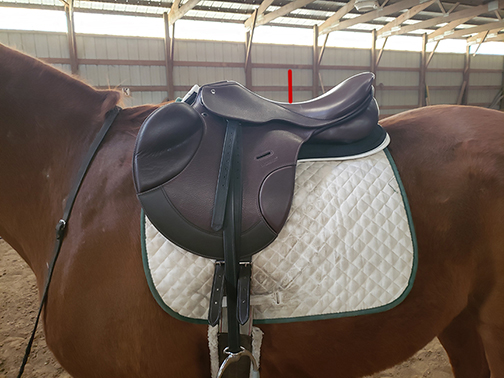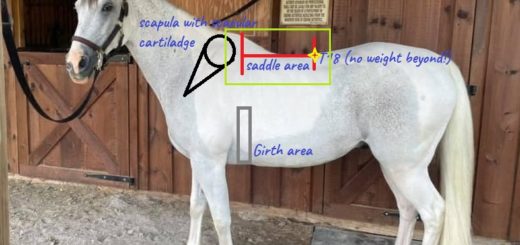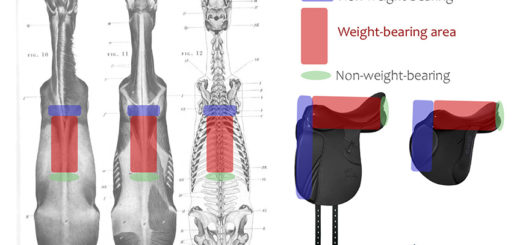The English Saddle Tree 1 – Tree Points
Understanding saddle fit is a craft and an art that comes with thorough education and lots of hands-on experience. An experienced saddle fitter can help you make sense of the ‘landscape’ of your horse’s back. Moreover, your fitter helps you understand and meet your and your horse’s particular needs.
In preparation for your fitting appointment, you probably search for information to make a well-informed decision.
This series of articles about various aspects and components of an “English” saddle provides you with some knowledge to make you just a little bit “dangerous”. With a little knowledge, you can make better decisions about the purchase of a used or new saddle.
What are tree points?

Tree points are the downward sloping parts in the front of the saddle that extend down from the gullet plate. They are located in the pommel area and not visible at first glance.
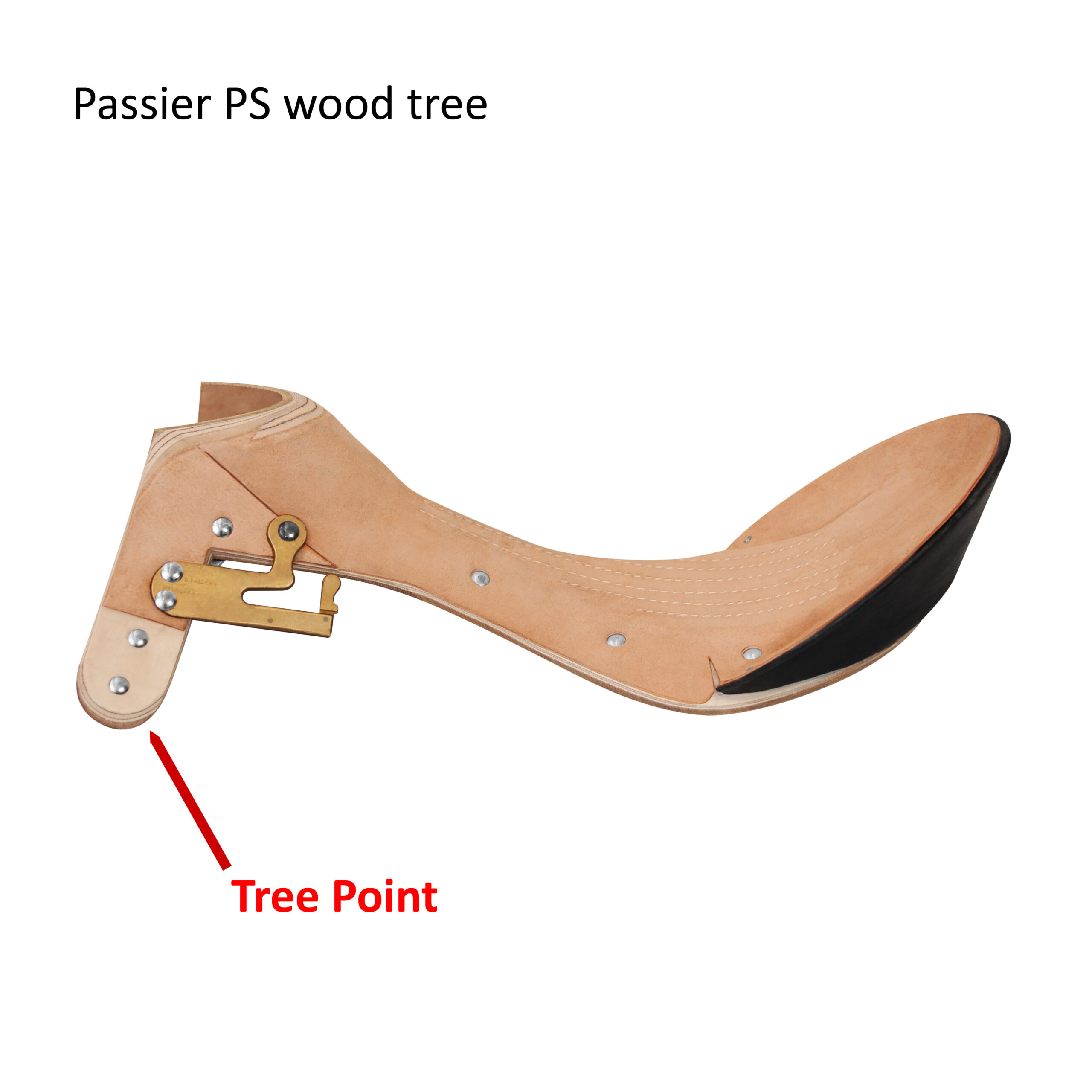
Most manufacturers measure their saddle tree size in “distance between tree points”. Depending on the manufacturer, the tree points can have various lengths. Therefore, there is no industry standard for saddle sizes.
If the length varies, the distance between the tree points also varies. (i.e. shorter tree point, shorter measured distance – longer tree point, longer measured distance)
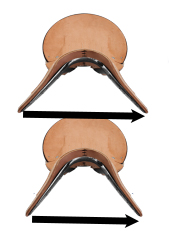 | Tree width is measured from the tip of one tree point to the tip of the other. |
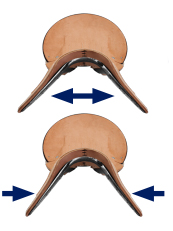 | When a Passier tree is widened or narrowed, a specialist adjusts the distance between the tree points. Note: You can chose from different ‘tree types’ to meet the individual needs of your horse. |
With so many different tree designs across various manufacturers, one cannot possibly know what is “under the hood” of any given saddle. Therefore, only a fitter or brand representative can give detailed and correct information as it relates to the construction and intended fit of their particular trees.
From the saddle fit perspective, it is important that the tree points lay flat and parallel to the horse’s shoulder in the ‘tree point area’. This area is located a few fingers behind the upper part of the horse’s scapula. This allows for even weight distribution along the tree points and prevents pinching. Positioning the tree points at a sufficient distance behind the scapula enables the horse to move its front leg forward freely without shortening its stride.
Flat and parallel are important, as the wrong angle – whether too wide or too narrow – leads to pressure points and soreness (or worse!).
What is the purpose of the tree point?
The main purpose of the gullet plate including the tree point is to provide stability to the tree. At the same time, high-quality, horse-friendly “English” trees must have a certain amount of flexibility. This is needed to move “with” the horse and not impede the horse’s movement as it is bending the spine.
For a wood saddle tree, this means a multi-layered, carefully designed construction – much different from a bulkier, sturdier “Western” tree – that stays flexible without risk of breakage for thousands of hours in the saddle. (The Passier PS saddle tree, for example, is manually constructed in over 1000 work steps! This requires incredible knowledge, skill, and attention to detail!)
If one would construct an “English” wood tree that was sturdy enough to last without a steel gullet plate (supporting the tree points), it would be a stiff and bulky piece of equipment that gets in the horse’s way and is uncomfortable for the rider.
The same principles apply to a high-quality, well-constructed and designed synthetic tree.
In short: The gullet plate with tree points provides stability and determines the width of the tree at the shoulder’s “tree point area” to guarantee a comfortable fit.
How long do tree points need to be?
In general, it is a logical and scientifically sound fact that “the shorter the tree point, the more freedom of movement”. Long tree points may create more ‘stability’ in some cases. However, and as we can see in the above explanation about the purpose of the gullet plate and the tree points, this is not necessarily desirable.
Tree points must allow the horse as much freedom as possible while still fulfilling the purpose of added stability. Therefore, the tree points must be “as short as possible and as long as necessary”.
Everything under the tree point must be flexible and comfortable.
Tree Point Myths Dispelled
Do I need long tree points for high withers?
No. It is not the length of the tree points that determines how far the pommel sits off the horse’s withers. Longer tree points also do not guarantee a better fit or more freedom of movement for horses with high withers. A good fit – especially for horses with high withers – is the result of the right combination of a variety of factors: Tree shape, panel shape, pommel design, and more.
You will find images on the internet that compare trees laying flat on a table. This only proves how a tree lays on a table! Not on a horse…
Do I need long tree points to clear the trapezius?
No. The tree points of a well-fitted, quality saddle do not “poke” into the trapezius. The provide stability to the tree and lay above the panels. In a properly fitting saddle, the tree points are parallel to the horse’s shoulder. Therefore, a longer tree point does not provide any advantages.
Are there horses that need “extended” tree points?
No. While there are few disadvantages of having a longer tree point – such as limited freedom of movement in certain horses with very laid-back shoulders – there is no advantage to a longer tree point.
Note: You will find differing opinions on this subject. However, let the facts speak for themselves.
Resources:

